Suzuki GSX-R 1000 Owners Manual: Air cleaner
The air cleaner element must be kept clean to provide good engine power and g1as mileage. If you use your motorcycle under normal low-stress conditions, you should service the air cleaner at the intervals specified. If you ride in dusty, wet, or muddy conditions, you will need to inspect the air cleaner element much more frequently.
Use the following procedure to remove the element and inspect it.
 Warning Warning
Never run the engine without the air cleaner element properly installed. |
|
Caution Clean or replace the air cleaner element frequently if the motorcycle is used in dusty, wet or muddy conditions. The air cleaner element will clog under these conditions, and this may cause engine damage, poor performance, and poor fuel economy. Clean the air cleaner case and element immediately if water gets in the air cleaner box. |
Air cleaner element removal
- Place the motorcycle on the side stand.
- Remove the front seat by referring to the seat lock and helmet holders section.
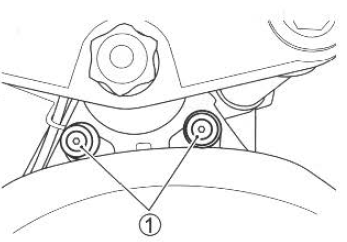
- Remove the fuel tank fitting bolts 3.
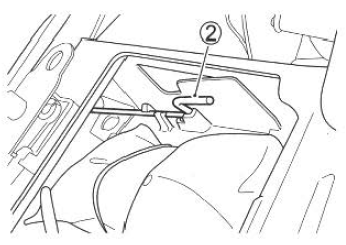
- Remove the prop stay 2.
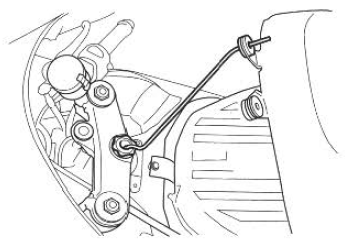
- Lift the front end of the fuel tank and prop it up as shown above. Insert the crank end of the prop stand into the hole of the steering shaft.
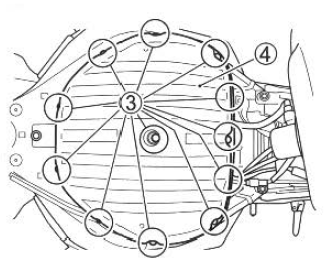
- Remove the 12 screws 3.
- Remove the cover 4.
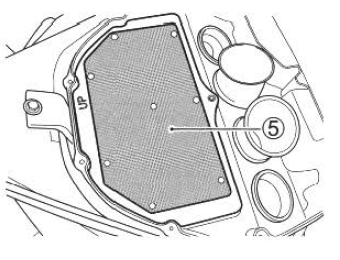
- Remove the air cleaner element 5.
Air cleaner element
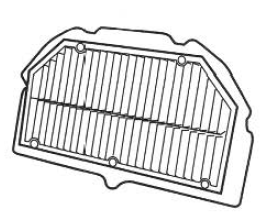
Inspect the air cleaner element condition. Replace the air cleaner element periodically.
Installation
Reinstall the air cleaner element in the reverse order of the removal.
|
Caution A torn air cleaner element will allow dirt to enter the engine and can damage the engine. Carefully examine the air cleaner element for tears during cleaning. Replace it with a new one if it is torn. |
|
Caution Failure to position the air cleaner element properly can allow dirt to bypass the air cleaner element. This will cause engine damage. Be sure to properly install the air cleaner element. |
 Batiery
Batiery
The battery is located under the
front seat. Remove the front seat
by referring to the seat lock
and helmet holders section.
This battery is sealed type
and requires no maintenance.
Have you ...
 Spark plugs
Spark plugs
Your motorcycle comes equipped
with ngk cr9e or denso
u27esr-n spark plugs. To determine
if the standard spark plug is
right for your usage, check the
color of the plug's porcelain center
electr ...
Other materials:
Specifications
Service data
Suspension
unit: mm (in)
Tightening torque specifications
Note
the specified tightening torque is described in the following.
“Rear suspension components” “rear suspension assembly
construction”
Reference: for the tightening torque of fastener ...
Crankshaft journal bearing inspection and
selection
Refer to “engine bottom side disassembly” (page 1d-
49).
Refer to “engine bottom side assembly” .
Inspection
Inspect each upper and lower crankcase bearing for
any damage.
Set the crankshaft onto the upper crank case.
Install the plastigauge onto each crankshaft jour ...
Exhaust system components
Exhaust pipe gasket
Exhaust pipe assembly
Ho2 sensor
Connector
: install the connector so that the
chamfer side faces backward.
Muffler chamber
Muffler body
Excv cable no. 1
Excv cable no. 2
When loosening or tightening the pulley bol ...
